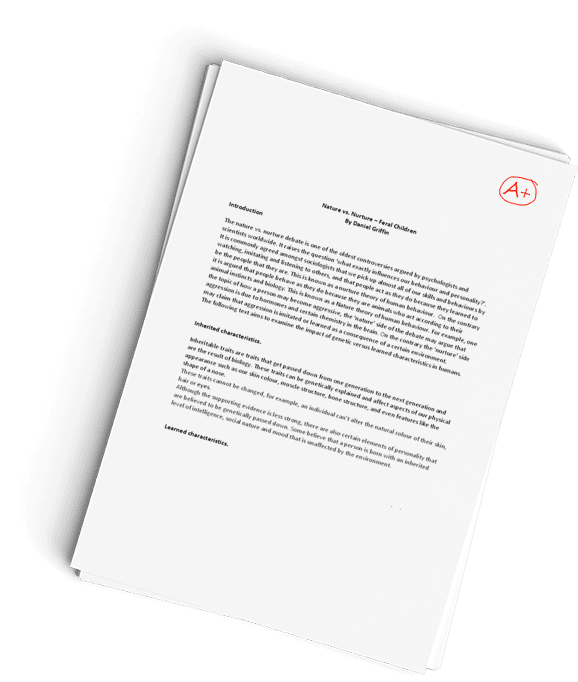3 dissection for white cc
Question Description
I have a discussion question that need to be answer and I provided three different answers so you can paraphrase really good one and also three different formats so u can make really good one
question
Focus on Hopkins description of the elements of a Risk Register on pages 88-90. Using the format in Table 7.4 (pp. 93), develop a brief risk register for a business of your choice and attach it to the discussion board. Be sure to complete all sections (just 1 or 2 points for each). Use the discussion thread to explain your risk register and to provide evidence that supports your entries. Comment on at least two other submissions.
answer 1
The Risk register can be considered as a risk action plan that consists of the organization’s situation in terms of the anticipated risks and the possible actions/solutions (Hopkin, 2017). The risk register is helpful to assess the organizations current situation based on the likelihood of the risk occurrence and its impact level. Having a clear dynamic risk register will enable the team project members to undertake the correct response in a timely manner.
However, currently, I am working with the public safety department at the East Falls campus on planning for establishing a closed Point of Distribution center at the East Falls campus to deliver medical services at emergency times. The closed POD goal is to deliver the COVID-19 vaccine to the TJU East Falls community when the vaccine becomes available. To ensure people’s safety during such time, several safety measures related to the COVID-19 protection guidelines must be taken which require detailed planning and having enough staff members to implement the plan.
Therefore, I started thinking of the possible risks that could face the team and hinder the success of the operations. For example, because most of the team members are either volunteers or members who are not always present at the campus, the lack of enough team members may cause operation failure. Additionally, lack of logistics support may result in an uncontrolled scene and non-compliance with the COVDI-19 safety guidelines such as social distancing. Finally, attached is a risk register for the POD operations.
Reference
Hopkin, P. (2017.) Fundamentals of risk management: Understanding, evaluating and
implementing effective risk management. NY, NY.
answer 2
One method to anticipate and manage risks in the organizational environment is to develop a risks register (Hopkin, 2017). Risks register is a written instrument organization uses to identify possible risks and defines their approach to these risks (Hopkin, 2017). According to Hopkin there is no single or official way to develop such an instrument. Developing risks register depends on what the organization wants to gain from the instrument.
Based on my previous experience in Saudi Red Crescent, I developed risks register for the field daily operations in Riyadh city, Saudi Arabia. Saudi Red Crescent is the exclusive provider for all out of hospital medical emergencies within the country. They respond to more than 15k calls a month within the Riyadh area alone, according to January 2019 statistics (SARCA, 2019). This enormous call volume puts them at significant risks regarding staffing, logistics, and technical issues. I focused on four frequent risks I used to see daily, which notably affects the service. I used the likelihood and magnitude approach in my risks register.
References
Mediasarca. (2019, February 03). #???????? | ???????? ???? ????? 2019?. Retrieved from https://twitter.com/mediasrca/status/1092034789849…
Hopkin, P. (2017.) Fundamentals of risk management: Understanding, evaluating and
implementing effective risk management. NY, NY.
answer 3
A risk register is a record of substantial risks that are faced by an organization, and includes the organization’s controls currently in place, more controls that are needed as well as the responsibility for control activities (Hopkin, 2017). Details of the risk registrar must be detailed in ordered to be audited for necessary changes should a risk become more routine in the organization. Some examples of project risks can include the following: Theft, contractor delays, unresolved projects, added workload to staff, legal action delays, and extreme weather.
In the years that I have worked at Thomas Jefferson University Hospital, I have seen risk registers made for snow day coverage to shortage of staffing and lack of equipment in the department needed to provide efficient operations. Back in 2014, it was the perfect storm when multiple medical assistants and patient registrars called out. Also, the sign-in kiosk software was down; therefore, no one could sign in for the registrars to be checked-in. Worse, it was on a Monday, which, at the time, was the busiest day of the week. I was the team lead medical assistant for my floor and was called in early by my supervisor to start the physicians who had treatment patients coming in. After rooming the first five patients and having my phlebotomist draw their bloodwork, I had to figure out how to take the two medical assist’s assignments and split it up among the two medical assistants including myself. The smallest clinics, which only had twelve patients for one provider and the other who had ten, we took turns to room the patients when were not rooming any of our assigned providers. It was backed-up in the beginning, however, once everyone knew what they were doing, the workflow began to move smoothly.
Next, I had to tackle the rooming situation. An add-on patient who was signing up for a clinical trial had been added on to the schedule and no had notified me. I came in and reviewed the schedule that I wrote up the day before and noticed one physician was seeing only seven patients in the morning and a nurse practitioner was seeing eleven patients who were all for chemotherapy. Since everyone would have two rooms, I decided to split the physician’s rooms and give one to the new clinical trial patient, whose visit lasted nearly three hours. Luckily, the physician’s schedule quickly dropped from seven to four after two patients called to cancel and another no-showed. The provider did not seem to mind being cut back to one room. However, if I cut the nurse practitioner’s rooms down to one, she would have not been able to see all her treatment patients and the patients would have been late for the chemotherapy and other treatments.
The sign-in kiosk was down for most of the morning. Before the front desk supervisor came in, I had placed a ticket into IT to have them fix the software and identify why the electronic health records system was slow for the front desk staff. I would routinely check for updates and ask the staff if they had seen any changes. Also, one senior registrar would get up every fifteen minutes to do a sweep of the waiting area to make sure everyone was checked in. This process prevented patients from being missed and having to wait unnecessarily.
Finally, our phlebotomist soon became backed up with the number of patients who needed labs drawn and was getting held up after patients told him they wanted their ports accessed. This was an issue that needed to addressed as quickly as possible. I had the medical assistants draw their own patient’s bloodwork and I would notify the nurses of each team when a patient with a port came in – giving them the lab requisition slips and printed labels to expedite their workload. Also, I had to make sure there was enough supplies stocked for the nurses so they had everything they need to go into a patient’s room without having to search all over the place and waste precious minutes of time that would be holding a patient up from their treatment.
In summary, it was a little bumpy to start but we got through the day and the afternoon went quickly. Afterwards, a meeting with management and all medical assistants was held in order to come up with a plan in case of multiple call outs happened again. We went over what worked during that clinic day, where resources were lacking, areas for improvement, and recommendations for a future staffing shortage. The risk registrar is attached to this discussion.
Reference
Hopkin, P. (2017). Fundamentals of risk management: Understanding, evaluating and implementing effective risk management (4th ed.). New York, NY: Kogan Page Limited.
Have a similar assignment? "Place an order for your assignment and have exceptional work written by our team of experts, guaranteeing you A results."








